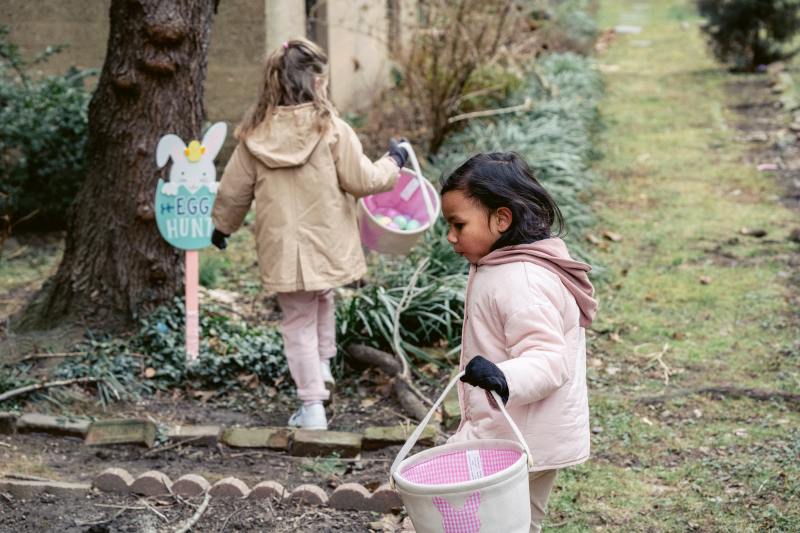
Easter Sunday is celebrated three days after the Lenten season. It is believed that eggs symbolize new life and rebirth, which originated in ancient times and later became a component of Easter celebrations. Like Christmas, Easter is a Christian holiday with profound religious importance and a positive attitude that even nonreligious families find difficult to ignore. Easter Sunday will be celebrated on April 9 this year, and the following are some of the exciting activities that you can do, especially with young people, during the Easter Egg Hunt:
Dye Easter Eggs
People used to be required to abstain from eating eggs throughout the season of Lent. Therefore in order to commemorate the conclusion of this time of self-denial and abstinence, they would paint and decorate eggs before saving them from consuming them during the holiday of Easter. Pure Wow explained that even though Easter is recognized as a Christian celebration, many symbols associated with it have deep roots in pagan rituals and practices. For example, the egg, initially a sign of new life in ancient Pagan culture, came to be used by Christians to represent the resurrection of Jesus.
Relay Race
In this activity, participants talk among themselves to form groups of their choosing. The basics of this relay are relatively straightforward: one team member leaves to look for an egg and then returns to their respective base. Another squad member is dispatched on a mission to locate an additional egg, after which they rejoin their colleagues. This pattern will continue until the very last member of the team is successful in locating an egg. The winner is the team that finds an egg for each member first.
DMCI Homes Communities stated that to implement this idea for an Easter egg hunt; you only need to divide the participants into several groups. The total number of groups and the number of people in each group will be determined by the number of people that sign up to take part. As a general rule, remember that more people equals more fun!
Mystery Numbers
The Easter egg hunt puzzle features five clues you must decipher to determine who shattered all the eggs. This resource is an enjoyable and ideal group activity for the classroom. As per Twinkl, your children's math abilities, as well as their ability to solve problems, will improve as a result of using this resource. You can either divide the class into five groups and provide each group with a clue or go over each clue with the entire class. The Easter egg search puzzle is a fun and exciting exercise that requires you to use your brain.
Treasure Hunt
Create a treasure hunt for your children by hiding clues about the house and sending them on a mission to find the next place. The Play Party Plan gave a sample clue, "Run really fast, use your legs, this is where we keep the eggs." Hide the hints in eggs and label each egg with a number, so the people looking won't miss any eggs by accident. Make sure that the answers to the clues lead to a larger prize at the end, either one for each child or one that they can all split.
Easter Egg Hunt Reward
After a long tiring day of different egg hunt activities, children should receive a reward related to what they are celebrating: the Easter egg hunt. Provide Commerce noted that parents could fill a customized basket or bag with candies and toys so children can choose from them. This modern take on the age-old Easter egg hunt is sure to be a favorite during the festivities surrounding this year's holiday.
Also Read:City Blasted For Removing 'Easter' From Egg Hunt Promos
Egg Hunt During Easter Sunday
The English Heritage explained that the Easter egg hunt is a tradition that originated in Germany. Some people believe its beginnings can be traced back to the late 16th century, when Martin Luther, a Protestant reformer, organized egg hunts for the people who attended his congregation. The males would hide eggs for the wives, children, and other family members to find. It was a reference to the biblical account of the resurrection, in which the women were the ones who found the empty tomb.
Moreover, it is said that the Easter Bunny, or the Easter Hare as it was initially called, is connected to the Easter egg hunt that is part of the German Lutheran tradition. The Easter Hare was initially mentioned for the first time in 1682 in an article titled "De ovis paschalibus," which translates to "About Easter eggs," written by Georg Franck von Franckenau. On the other hand, the association of hares and rabbits with Easter dates back even further in central Europe. Hares were associated with fertility and the Virgin Mary, and they were sometimes featured in paintings of the Virgin and Christ Child and illuminated manuscripts. According to an old tradition, the Easter hare would present children who had been good throughout the year with a basket full of colorfully decorated eggs, which would then be hidden in various parts of the home and garden for the children to locate.
Related Article: Pastor Defends 200K Easter Egg Drop, Says 'The Goal Is to Reach People'


















